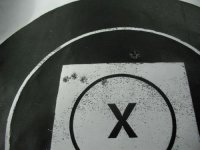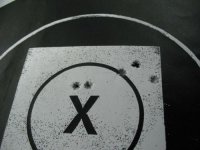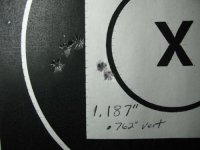Stan, I think Ray has it right. ES and SD are things you look at when your groups aren't tight (or scores aren't good), not things you look at before hand. For me, who does most of my load development at 100 yards, ES and SD are things I note just in case that good 100 yard load shows vertical at 1,000. I know (though a few disagree) if a load is bad at 100 yards, it won't get any better as distance increases. The opposite is not always true: a fine 100 yard load may show vertical at 1,000. If that happens, working on SD may improve it. May not, too.
To answer your question, use a ballistics program. Keeping everything the same except for velocity, note the differences in drop at 1,0000 yards. That shows you the the difference from velocity alone. Now we know that some compensation is available from "tuning." If you're really out of tune, the vertical spread will be higher than what's predicted by the ballistics program. And if you're in tune, the vertical spread will be lower.
So it becomes a matter of testing.
To go at it the other way, trying to get a low SD/ES, you may achieve *that* result and still have a poor load. It's happened too many times. I remember when Steve Shelp wasted a lot of time with VV170 in his .338 because it gave him such good SD numbers. But the groups were big. When he went to H-1000, his SD went up, but the groups shrank.



